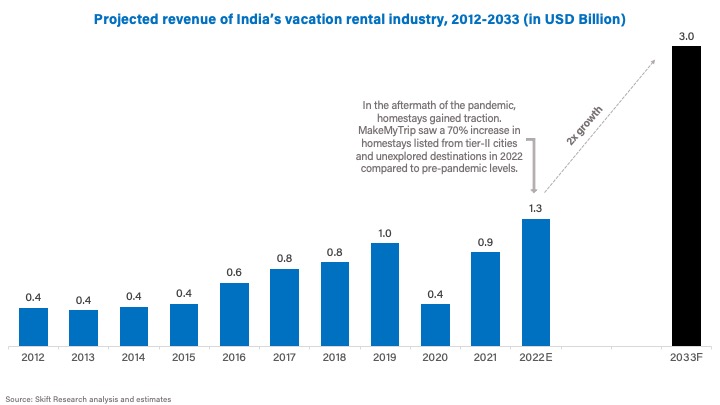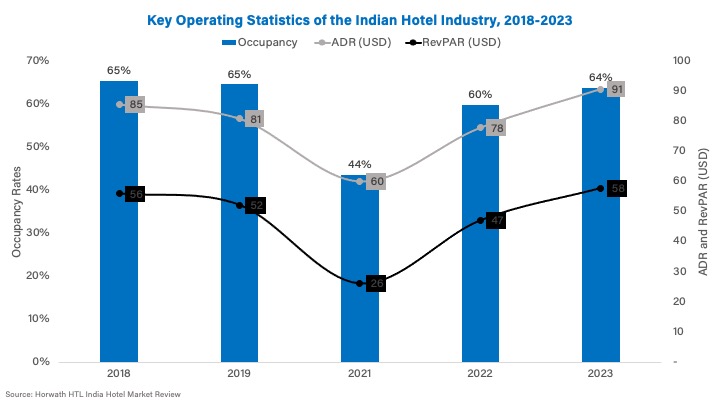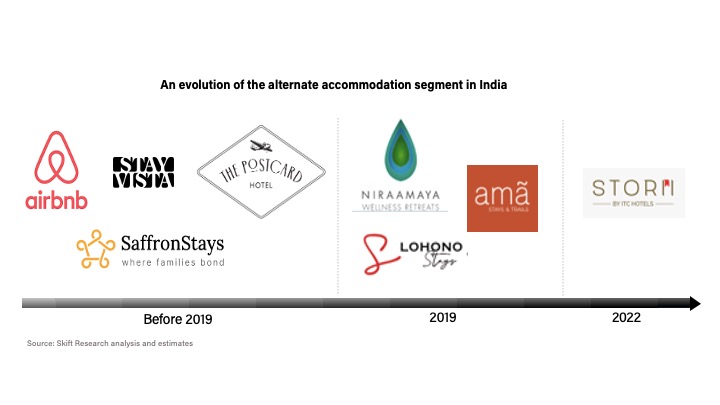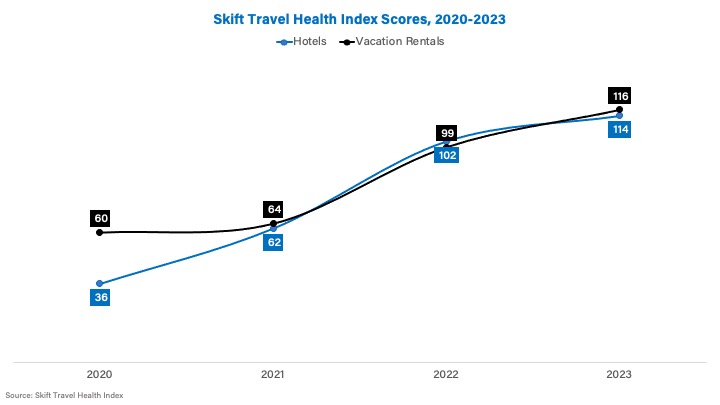Skift Take
Established brands and rising Millennial and Gen Z demand are transforming India’s travel landscape through authentic, immersive short-term rentals.
Vacation rentals still represent a relatively small segment in India’s hospitality industry. Research we put out last August (India on the Move: A Traveler Survey) showed around 62% of Indian travelers prefer hotels for domestic trips, and only 7% opt for vacation rentals.
But several factors suggest that the short-term rental market has significant potential.
Skift Research’s preliminary analysis indicates that the Indian short-term rental industry is poised to expand into a $3 billion market by 2033. In a previous report, we estimated that it was expected to generate approximately $1.3 billion in revenue in 2022.
Let’s get into the reasons why there’s room for more growth.


1. Not Enough Hotels in India
One important factor is the under-supply and under-penetration of hotels in India. According to Bernstein Research, the country faces a substantial shortage of hotel accommodations, with just 2.6 hotels for every 100,000 people, less than half the ratio found in China and about a quarter of the count in the United States.
The shortage exists even with rapid growth in the number of hotel rooms, with a compound annual growth rate (CAGR) of 13% from 2015 to 2019.
At the same time, there’s plenty of demand. Occupancy rates continued to rise until the onset of the pandemic, and began rising again after a dip in 2021. An increase in Average Daily Rates (ADR), resulted in Revenue per Available Room (RevPAR) growth.


The expense and time required for constructing new hotel rooms make it challenging to meet the rising demand. Therefore, there’s a likelihood that this unmet demand will spill over into alternative accommodations like short-term rentals. Short-term rentals offer the advantage of relatively straightforward conversion of existing villas and bungalows into rentable properties, adding to their appeal.
2. Established Brands Could Broaden Appeal of Short-Term Rentals
The case for vacation rentals becomes even stronger with the entry of established brands that blur the boundaries of hotels and rentals. Until 2019, the vacation rental sector in India was in its infancy, with Airbnb pioneering the market in 2012. Subsequently, players like Saffron Stays and StayVista entered the scene in 2015 and 2017, respectively.
In 2019, prestigious brands like amã, a subsidiary of IHCL (Indian Hotels Company Limited), and Lohono ventured into the market. More recently, ITC announced its entry with “Storii by ITC,” offering bespoke experiences through distinctive hotels and resorts, featuring intimate-sized properties within the premium segment.
This influx of established hotel chains into the vacation rental sphere not only underscores its expanding potential within the Indian hospitality landscape but also signifies a significant evolution in consumer preferences.


3. Shifting Travel Preferences Boost Demand for Short-Term Rentals
The pandemic has reshaped travel preferences, with today’s travelers increasingly favoring home-like comforts and immersive experiences. While one might attribute the popularity of vacation rentals to post-pandemic travel behavior changes, the Skift Travel Health Index scores reveal that both hotels and vacation rentals have been recovering at a similar pace, suggesting sustainable demand for vacation rentals.


Santosh Kumar is Booking,com’s Country Head, Indian subcontinent and Indonesia, and here’s how he put it in a recent report, How India Travels 2023: “Alternative accommodation has done for travel and tourism what the Indian Premier League has done for cricket. It has transformed the way people travel, enabled destinations and neighborhoods to be experienced in a more authentic manner, and facilitated a wave of micro-entrepreneurship for homeowners.”
Millennials and Gen Z travelers in India are leading the trend towards short-term rentals, seeking accommodations that provide a local essence and meaningful connections. Insights from interviews with Airbnb India officials highlight their preference for stays supporting responsible travel practices and offering amenities like kitchens and private spaces.
Over 85% of first-time bookers on Airbnb in India in 2022 were Millennials and Gen Zs. This shift also aligns with broader travel trends seen in 2023, such as a rising interest in off-the-beaten-path destinations and solo travel for nature-based experiences.
According to Booking.com’s How India Travels 2023 report, ‘Alternative is the new normal’ as demand for non-traditional stay options like hostels, campsites, vacation rentals, and chalets is surging. In 2023, the growth rate of ADR and booked room-nights for alternative accommodations is twice that of hotels. For every camp booking, three were at villas and 14 at guest houses. Couples now lead in bookings, seeking intimate, unique stays. Weekend bookings for alternative accommodations in top cities were four to five times higher in 2023 than in 2022.
